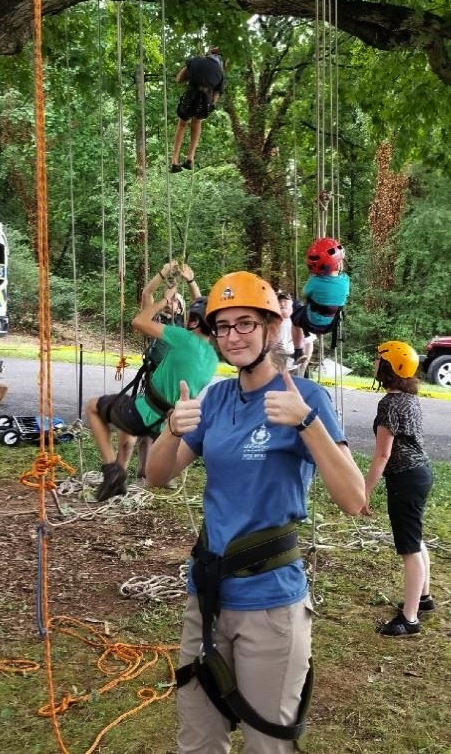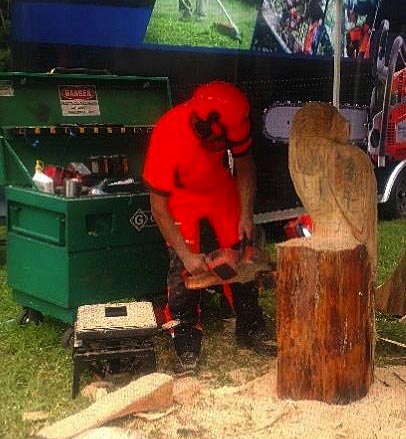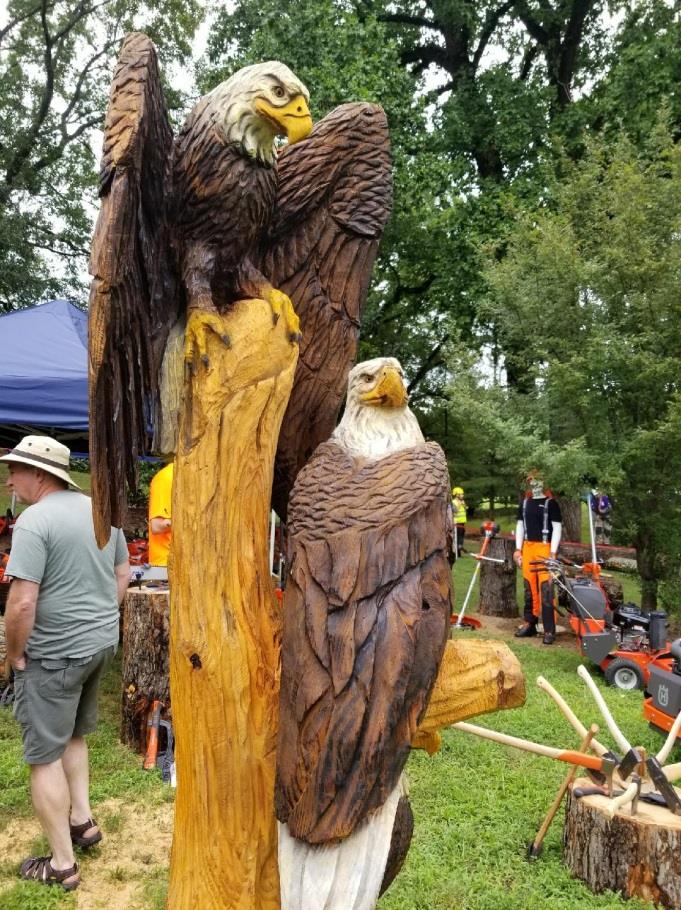2017 International Tree Climbing Competition
By Rebecca Nardacci, Fairfax Horticulture Intern

Me preparing to climb
The original tree climbing competitions in California gave new climbers practice and training for their jobs. Slowly, more companies became aware of the competition and more climbers were inspired to join the competition. In 1976 the first official competition, “ISA Jamboree” was held in St. Louis, MO. In 1994, the event became international and the tree climbers were exposed to different techniques and methods of climbing. In 2001, the first women’s champion was celebrated, and since then the competition has continued to grow. After years of competitions, they now have an official set of rules and events.

Chainsaw sculpture in progress
The competition consists of a series of events, much like a track meet, where climbers are scored individually. The events are Aerial Rescue, Work Climb, Secured Footlock, Belayed Speed Climb, and Throwline. Aerial Rescue is a timed event where the climber has to rescue a 200-lb dummy that has supposedly had an accident in the tree. The climber is scored on how efficiently and safely he or she rescues the dummy. Work Climb, consists of climbers navigating through the tree to different stations that simulate a day’s work in the tree. These stations include handsaw, limb toss, pole pruning, limb walk and landing. When they complete each task, they ring a bell. The climber with the fastest time wins. Secured Footlock is a timed ascent straight up a rope about 50 ft high using the footlock rope climbing method. Belayed Speed Climb is another timed event on a predetermined path up a tree to a height of around 60 ft. The climber will have to ring a bell when he or she reaches the top, and occasionally will have to ring a bell along the route. This is a different method of climbing than the secured footlock method. Belaying is a technique used to slow and secure a climbing rope. If a climber is belayed it means that someone is at the bottom minding the slack in the rope in case the climber falls or slips. It is also possible for a climber to self-belay, which means the climber minds the rope slack himself. Throwline is a timed event where climbers must accurately situate a climbing line in two of eight target areas in the tree. The targets are placed in a variety of areas, making some harder to reach and, therefore, worth more points. Throwing a line is the first step in climbing a tree. First, second and third places are all awarded in each event. The climbers with the highest combined score in all five events go on to the Masters’ Challenge. Click on each event to learn more details.

Finished chainsaw eagle sculpture
Another aspect of the event were tents advertising clothing and climbing gear. One series of tents in particular caught my eye: the Husqvarna set-up where a man was expertly carving up a hunk of a tree with a chainsaw. Throughout the day, the tree slowly transformed into a bald eagle. This unconventional sculptor was also spray painting the wood as he carved to accent the eagle’s feathers. This chainsaw sculptor was a reminder throughout the day of the diversity and beauty of the skills surrounding arboriculture.
Resources
2017 International Tree Climbing Championship – World Championship, International Society of Arboriculture